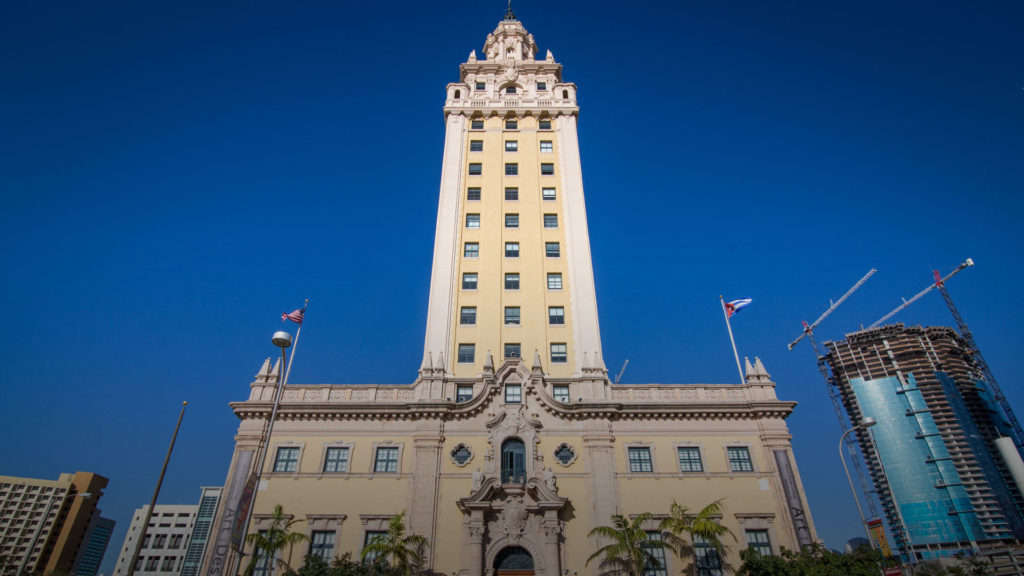Governor Pledges $25 Million To Renovate Freedom Tower
The Freedom Tower, a National Historic Landmark, could be getting some much-needed renovations soon.
On Nov. 15, Governor Ron DeSantis announced that he was pledging $25 million in his proposed state budget to address some critical renovations that the building needs.
Aging and weather conditions have eroded the building’s structure since it was erected almost 100 years ago. If the budget is passed by the Legislature by June 15, the processes will be sped up to be fully ready for the tower’s centenary.
“The Freedom Tower is one of the most iconic buildings in the city,” said Natalia Crujeiras, the Executive Director at Miami Dade College’s Office of Cultural Affairs whose department is housed in the tower. “I’m thrilled that this is happening. We love the building and want it to last for future generations.”
Among the projects, the proposed funding would cover: the cost of structural repairs to the columns of the building, water intrusion in parts of the tower that have caused flooding in the basement and elevator upgrades.
For example, although the building is Americans with Disabilities Act compliant, it only provides one accessible entrance (through 6 St.) for people with disabilities but there are still other areas that only have stairwells.
“Inclusion is a top priority for our project,” Crujeiras said.
The tower was built in 1925 by James Middleton Cox, a former Ohio congressman, governor and presidential candidate, to house his newly purchased newspaper, The Miami Daily News and Metropolis (which then became The Miami News).
Its details were designed to replicate a Spanish Cathedral and its 289-foot height made it the tallest building in the south at the time.
In 1962, the tower became a center for the federal Cuban Refugee Assistance Program, which was created to aid thousands of Cubans that fled the 1959 communist revolution.
It became known as El Refugio (The Refuge), a place where Cubans were able to receive financial aid, food and medical care. Others knew it as the “Ellis Island of the South,” which symbolized the American ideals of liberty and democracy to the refugees.
Forty-six years later, it was designated as a United States National Historic Landmark.
“It tells a story of Miami,” said trustee Marcell Felipe during November’s board of trustees meeting. “It’s also a story in general of what immigrants can contribute to this country [and] a testament to what people can do in freedom.”
The tower is currently home to the Museum of Art and Design and exhibitions (currently closed due to construction), which include the Cuban Legacy Gallery, the Kislak Center and the Exile Experience. It also houses MDC’s Cultural Affairs Department and the offices of the Miami Book Fair, the Miami Film Festival and Live Arts Miami.
“The Freedom Tower is a jewel and means a lot to me because it’s one of the greatest landmarks of Miami,” said Paul George, an MDC professor emeritus who taught history for 26 years and currently serves as a Resident Historian at History Miami Museum.




